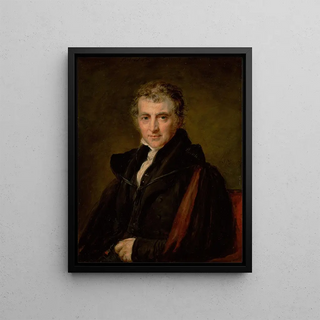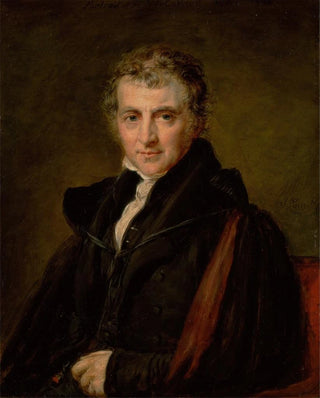Art print | Augustus Wall Callcott R.A. - John Linnell


View from behind

Frame (optional)
In the fascinating world of 19th-century British art, the art print "Augustus Wall Callcott R.A. - John Linnell" stands out for its ability to capture the very essence of nature and everyday life. Immersing oneself in this piece, the viewer is transported to a universe where light dances across landscapes, revealing subtle nuances and deep emotions. This work, while a simple representation, evokes a story, an atmosphere, and a dialogue between the artist and their time. The magic of this art print lies in its capacity to transcend mere visuals to touch the soul, awakening in us memories and reflections on the ephemeral beauty of the world around us.
Style and uniqueness of the work
Callcott's work is characterized by a distinctive style that combines realism and romanticism, a feature that is uniquely his own. The composition of "Augustus Wall Callcott R.A. - John Linnell" unfolds with delicate harmony, where each element seems carefully thought out to create perfect balance. The colors, with striking richness, blend into one another, while natural light plays a predominant role, infusing vibrant life into each scene. The way Callcott uses light to shape forms and emphasize details demonstrates his immense talent and technical mastery. Each brushstroke seems to tell a story, each shadow and reflection inviting deeper exploration of themes of nature and humanity.
The artist and his influence
Augustus Wall Callcott, an emblematic figure of the Royal Academy, established himself as a master of landscape. His influence on the artistic movement of his time is undeniable, and his innovative approach paved the way for many artists who followed. Callcott captured not only the beauty of English landscapes but also the essence of rural life, offering a sincere look at his environment. His friendship with artists such as John Linnell also contributed to enriching his artistic vision. Together, they explored common themes, blending realism and romantic sensitivity. Callcott's legacy endures

Matte finish

View from behind

Frame (optional)
In the fascinating world of 19th-century British art, the art print "Augustus Wall Callcott R.A. - John Linnell" stands out for its ability to capture the very essence of nature and everyday life. Immersing oneself in this piece, the viewer is transported to a universe where light dances across landscapes, revealing subtle nuances and deep emotions. This work, while a simple representation, evokes a story, an atmosphere, and a dialogue between the artist and their time. The magic of this art print lies in its capacity to transcend mere visuals to touch the soul, awakening in us memories and reflections on the ephemeral beauty of the world around us.
Style and uniqueness of the work
Callcott's work is characterized by a distinctive style that combines realism and romanticism, a feature that is uniquely his own. The composition of "Augustus Wall Callcott R.A. - John Linnell" unfolds with delicate harmony, where each element seems carefully thought out to create perfect balance. The colors, with striking richness, blend into one another, while natural light plays a predominant role, infusing vibrant life into each scene. The way Callcott uses light to shape forms and emphasize details demonstrates his immense talent and technical mastery. Each brushstroke seems to tell a story, each shadow and reflection inviting deeper exploration of themes of nature and humanity.
The artist and his influence
Augustus Wall Callcott, an emblematic figure of the Royal Academy, established himself as a master of landscape. His influence on the artistic movement of his time is undeniable, and his innovative approach paved the way for many artists who followed. Callcott captured not only the beauty of English landscapes but also the essence of rural life, offering a sincere look at his environment. His friendship with artists such as John Linnell also contributed to enriching his artistic vision. Together, they explored common themes, blending realism and romantic sensitivity. Callcott's legacy endures






